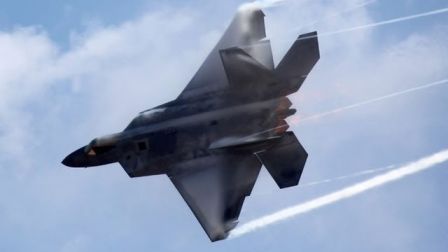
The R-36, (Russian: Р-36) is a family of intercontinental ballistic missiles (ICBMs) and space launch vehicles designed by the Soviet Union during the Cold War. The original R-36 was produced under the Soviet industry designation 8K67 and was given the NATO reporting name SS-9 Scarp. The later version, the R-36M was produced under the GRAU designations 15A14 and 15A18 and was given the NATO reporting name SS-18 Satan. This missile was viewed by certain U.S. analysts as giving the Soviet Union first strike advantage over the U.S., particularly because of its very heavy throw weight and extremely large number of re-entry vehicles. Some versions of the R-36M were deployed with 10 warheads and up to 40 penetration aids and the missile's high throw-weight made it theoretically capable of carrying more warheads or penetration aids. Contemporary U.S. missiles, such as the Minuteman III, carried up to three warheads at most.
The R-36 (SS-9) is a two-stage rocket powered by a liquid bipropellant, with UDMH as fuel and nitrogen tetroxide as an oxidizer. It carries one of three types of re-entry vehicles (RVs) developed especially for this missile:
The Mod 1 and Mod 2 carried single nuclear warheads of 18 and 25 megatons (mt) of TNT yield respectively.
The Mod 4 carried three re-entry vehicles (MRV).
An additional version, the Mod 3, was proposed (it was to be a Fractional Orbital Bombardment System (FOBS), a missile that travels through space in a low-earth orbit), but was not adopted due to the Outer Space Treaty.
The R-36P missile was developed to carry the Mod 4 warhead, while the R-36O (the letter O) was to be for the Mod 3 FOBS. R-36 and R-36P missiles were hot launched from their silos.
The R-36M (SS-18) is similar to the R-36 in design, but has the capacity to mount a MIRV payload of 10 warheads, each with a 550--750 kt yield, or a single warhead of up to 20 mt. Throw-weight of the missile is 8,800 kg. This makes the Soviet R-36 the world's heaviest ICBM; for comparison, the heaviest US ICBM (the retired LGM-118 Peacekeeper, that carried 10 warheads of 300 kT each) had less than a half of this at 4,000 kg. The R-36M has two stages. The first is a 460,000 kgf (4.5 MN) thrust motor with four combustion chambers and nozzles. The second stage is a single-chamber 77,000 kgf (755 kN) thrust motor.
In the last decade Russian armed forces have been steadily reducing the number of R-36M missiles in service, withdrawing those that age past their designed operational lifetime. About 40 missiles of the most modern variant R-36M2 (or RS-20V) will remain in service until 2019 and will be then replaced by newer MIRV version of Topol-M. In March 2006 Russia made an agreement with Ukraine that will regulate cooperation between the two countries on maintaining the R-36M2 missiles. It was reported that the cooperation with Ukraine will allow Russia to extend the service life of the R-36M2 missiles by at least ten to 28 years. pravda

:34

:38

:38

:58

1:14

:34

:45

:42